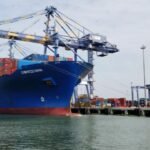Serving as the backbone of maritime trade, Ports in India are crucial to achieving the nation’s economic and strategic ambitions.
With access to key international shipping routes, the ports collectively facilitate the trade of 1,540.23 million tons of cargo movement.
Of this, the major ports in India handled 819.23 million tonnes and non-major ports (minor ports) handled 721 million tonnes of cargo in 2023-2024.
They play a key role in the nation’s economy, as approximately 90% of India’s international trade, accounting for 70% by value, happens through maritime transport.
Let’s explore the ports in India, including both major and non-major ports, along with their capacities, infrastructure, cargo handled, and significance.
Classification of Ports – Major and Non-Major
India, with a coastline of 7516 km, is home to one of the most extensive port networks in the world.
Ports in India are classified into two main types – Major ports and Minor ports, based on their administrative control and functionality.
All major ports are administered by the Ministry of Ports, Shipping, and Waterways of the Central Government. In contrast, the State government ministries or relevant departments administer the minor ports.
There are 12 major ports in India, which are governed by the Major Ports Act, 1963, and the Major Port Authorities Act, 2021. All these major ports are functional and handle cargo in huge quantities.
Regarding minor ports, there are 200 minor ports in India, of which several are intermediate ports and handle a significant amount of cargo. Of all the minor ports, 65 ports can handle cargo, while others support activities like passenger transport and fishing.
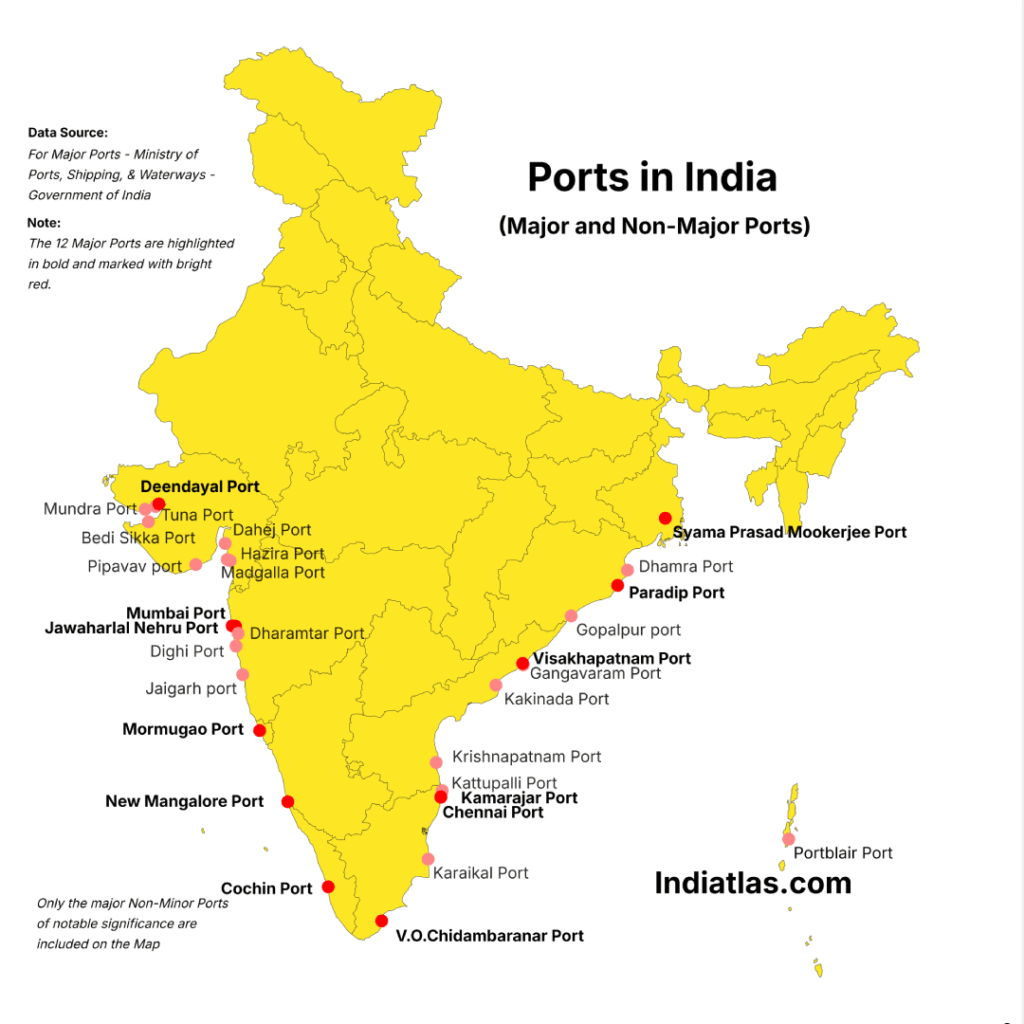
12 Major ports in India
| Port | Location | State | Cargo Handled in MMT | Estb.Year | Coast |
|---|---|---|---|---|---|
| Deendayal Port | Kandla | Gujarat | 132.37 | 1965 | Western |
| Mumbai Port | Mumbai | Maharashtra | 67.26 | 1873 | Western |
| Jawaharlal Nehru Port | Navi Mumbai | Maharashtra | 85.81 | 1988 | Western |
| Mormugao Port | Goa | Goa | 20.62 | 1985 | Western |
| New Mangalore Port | Mangaluru | Karnataka | 45.70 | 1974 | Western |
| Cochin Port | Kochi | Kerala | 36.31 | 1928 | Western |
| V.O. Chidambaranar Port | Thoothukudi | Tamil Nadu | 41.40 | 1974 | Eastern |
| Chennai Port | Chennai | Tamil Nadu | 51.59 | 1881 | Eastern |
| Kamarajar Port | Ennore | Tamil Nadu | 45.27 | 2001 | Eastern |
| Visakhapatnam Port | Visakhapatnam | Andhra Pradesh | 81.09 | 1933 | Eastern |
| Paradip Port | Paradip | Odisha | 145.37 | 1966 | Eastern |
| Syama Prasad Mookerjee Port | Kolkata | West Bengal | 66.44 | 1870 | Eastern |
1. Deendayal Port, Kandla, Gujarat
Located in the Kutch district of Gujarat, Deendayal Port, popularly known as Kandla Port, is one of the major ports in India with a huge cargo handling capacity of 267.10 MMT.
Its strategic location makes it a crucial gateway for India’s maritime trade, supporting the exports and imports of northern, eastern, and central Indian states.
This Port has 16 berths, seven oil jetties, and two container terminals, which facilitate the easy handling of vessels. Deendayal Port is the busiest port in India.
During 2023-24, Deendayal Port handled a traffic of 132.374 MMT of cargo, making it the second-largest port in terms of cargo handled.
This all-weather tidal Port handles a wide range of cargo, including petroleum products, Vegetable oil, Chemicals, and Fertilisers.
The Vadinar offshore oil terminal currently has three single-buoy moorings that can handle large quantities of crude oil. It also serves as the primary point for transporting crude oil to refineries.
2. Mumbai Port, Maharashtra
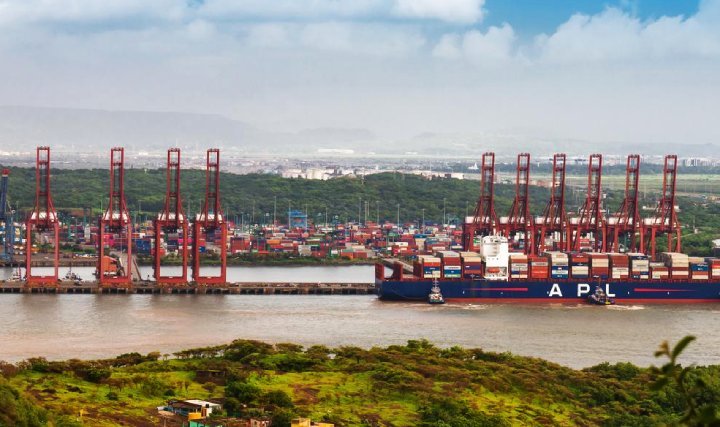
Being the largest natural Port in India, as well as the nearest Port to metros like Navi Mumbai, Pune, and Surat, Mumbai Port holds a unique position among the ports in India.
This multipurpose Port handles a variety of cargo such as chemical and petroleum products, automobiles, steel cargo, crude oil, and coal.
The harbour’s deep waters provide reliable shelter for vessels throughout the year. It has 63 berths and five wharfs for handling cargo.
This Port has handled 67.261 MMT of cargo for the year 2023-24 and has a total capacity of 83.85 MMT per annum.
3. Jawaharlal Nehru Port, Navi Mumbai, Maharashtra
Just like the Mumbai port, Jawaharlal Nehru Port holds significant importance due to its strategic location.
This Port is extremely close to Mumbai port, but it differs from it in having exclusive container handling facilities. It is ranked 26th among the top 100 container ports in the world.
In fact, this is one of India’s largest container ports and has a handling capacity of 125.30 MTPA.
For the year 2023-24, Jawaharlal Nehru Port handled 85.818 MMT of goods. This Port has five fully automated container terminals.
4. Mormugao Port, Goa
Located in Mormugao, South Goa, it is a major port well known as a hub for iron ore exports with an effective rated capacity of 63.40 MMT.
Mormugao Port has two non-cargo berths, seven cargo berths, and three mooring dolphins to handle cargo, and features a large natural harbour with breakwaters.
The main cargoes handled at this Port, in addition to iron ore, are coal and bulk minerals.
For the year 2023-24, this Port had handled cargo traffic of 20.628 MMT.
This Port is the first in India to implement Green Ship incentives, aiming to reduce air emissions caused by shipping.
5. New Mangalore Port, Karnataka
With a rated capacity of 105 MMT, the New Mangalore port in Karnataka plays a crucial role in the region’s trade.
This Port has 16 berths, one single-point mooring, and handles cargo such as iron ore, petroleum, timber, fertilisers, manganese, chemicals, granite, cashews, and coffee, mainly. It also features a berth for cruise ships, catering to tourists visiting the region.
This Port had handled cargo traffic ig 45.707 MMT during 2023-24.
An interesting fact about this Port is that it uses clean energy and is 100% powered by solar.
6. Cochin Port, Kerala
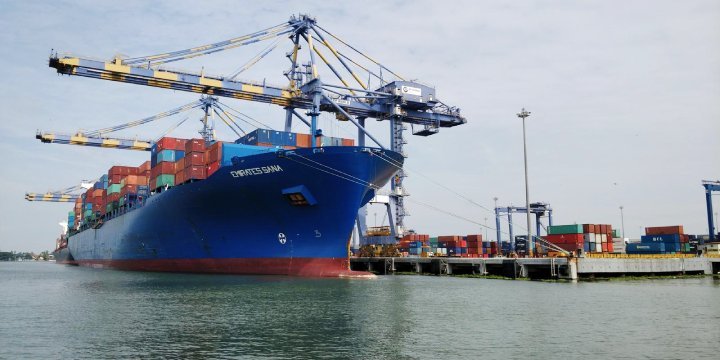
Located in Kochi, Kerala, the Cochin Port has gained significance among major ports in India for its exceptional container handling efficiency and high performance standards.
Cochin is considered one of the prime points for the shipping industry in India.
This Port has a cargo handling capacity of 80.50 MMT and majorly handles POL, Fertilisers, Chemicals, Cement, and other goods.
During 2023-24, this Port handled 36.315 MMT of goods. It had 22 berths and one single-point mooring. This Port is efficiently integrated with the road and rail network, facilitating seamless transportation.
Cochin port is in proximity to the international sea route and has a vast business potential.
The Port has two cruise terminals and considers cruises a major business prospect, given Kerala’s thriving tourism industry.
7. V.O. Chidambaranar Port, Thoothukudi, Tamil Nadu
Located in the Southern part of Tamil Nadu in Thoothukudi, V.O. Chidambaranar port is one of the 12 major ports in India with a capacity of 81.05 MMT per annum.
It is strategically close to the neighbouring country, Sri Lanka, as well as to the East-West International sea route and mainly handles industrial coal, copper concentrate, Iron ore, timber and fertilisers.
During 2023-24, this Port handled 41.402 MMT of cargo traffic with a consistent growth rate over the past few years.
Due to its location, this Port is well protected from storms and cyclone winds. It is one of the leading container and bulk handling ports in the southern part of the country, with the third-largest container terminal.
8. Chennai Port, Tamil Nadu
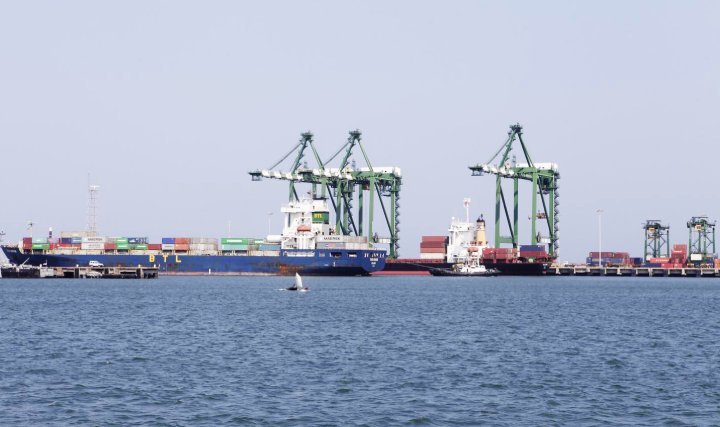
Established in 1881, Chennai is one of India’s most strategically important ports, given the manufacturing industries in Tamil Nadu, as well as those in neighbouring Andhra Pradesh.
During 2023-24, Chennai port handled 51.598 MMT of cargo with an increase of 5.4% compared to 2022-23.
The Chennai port features 27 berths located across specialised docks. It handles a diverse range of cargo, including automobiles, petroleum products, coal, fertilisers, and other commodities.
This Port has direct rail connections to Chennai Central railway station and major freight corridors. Additionally, it is well-connected to NH32 and NH48, ensuring efficient cargo transportation.
9. Kamarajar Port, Ennore, Tamil Nadu
Located 18 km north of Chennai Port, Kamarajar Port (formerly Ennore Port) is one of the major ports in India, commissioned in 2001.
It is the only corporatised major Port in India. Currently, all its shares are held by the Chennai Port Trust, following the transfer of the Government of India’s 67% shares on 27 March 2020.
This Port primarily serves to handle the thermal coal requirement of Tamil Nadu. However, the Port currently handles Thermal coal, automobile units, Chemicals, gas, and bulk minerals.
The handling capacity of Kamarajar port is 57.44 MMT and has nine berths. During 2023-24, this Port handled 45.277 MMT of cargo.
10. Visakhapatnam Port, Andhra Pradesh
Well-known for its operational efficiency, Visakhapatnam is one of the major ports with a re-rated capacity of 136.39 MMT per annum.
Located on India’s eastern coast in the state of Andhra Pradesh, it is the third largest among the ports in India in terms of cargo handling. This Port has handled 81.09 MMT traffic for the year 2023-24.
Visakhapatnam port has two harbours and a total of 28 berths. This Port handles Coal, Iron ore, Crude oil, Edible oil, Steel, Alumina, Manganese ore, fertilisers, petroleum products and a few other commodities.
Additionally, within this Port, there is an exclusive crude oil handling facility at a single-point mooring and a cruise terminal that meets international standards.
One remarkable aspect of Visakhapatnam port is that it is the first major port to operate entirely on solar power.
11. Paradip port, Odisha
Among all the ports in India, Paradip port holds a special importance, being the largest Port in India by volume of cargo handled.
For the year 2023-24, Paradip port handled 145.379 MMT of traffic, and it has a total capacity of 289 MMT.
Strategically located at the midpoint between Kolkata and Visakhapatnam ports, Paradip port handles cargo such as oil, Petroleum products, ores (including iron, manganese, and chrome ore), fertilisers, Coking and thermal coal, etc.
Opened in 1966, this Port has 18 berths, three single-point moorings, and 1 Ro-Ro Jetty that facilitates the cargo handling on a wide range of vessels. The Port is also well equipped with advanced handling equipment and adequate storage facilities.
Paradip port is very well-connected to the East Coast Railway main line as well as to NH 5A and State Highway No. 12.
12. Syama Prasad Mookerjee Port, West Bengal (Kolkata Dock System and Haldia Dock Complex)
Constructed by the British East India Company in 1870, the Syama Prasad Mookerjee Port, formerly Kolkata Port, is the oldest operating and the only riverine major Port in India.
Located on the River Hooghly, this Port features two docking systems on the eastern (Kolkata dock system) and the western bank (Haldia dock complex) of the river.
This Port had handled 66.44 million tonnes of cargo traffic in 2023-24.
It is one of the main ports, serving not only northeastern Indian states but also neighbouring countries Nepal and Bhutan, which underscores its strategic importance.
The Syama Prasad Mookerjee Port has 51 berths and 86 wharfs, handling a wide range of cargo, including textiles, cotton, Iron ore, leather, fertilisers, Petroleum products, and Containers.
Minor Ports in India (Non-Major)
Collectively, all the minor ports in India (non-major ports) handle cargo traffic comparable to that of the major ports.
During 2023-24, all non-major ports handled about 723.41 MMT of traffic, with Gujarat and Andhra Pradesh’s ports handling huge amounts.
The top performers among the non-major ports are.
| Port | Location | State | Cargo Handled in MMT | Estd. Year | Coast |
|---|---|---|---|---|---|
| Mundra Port | Mundra, Kutch district | Gujarat | 180 | 1988 | Western |
| Sikka Port | Sikka, Jamnagar District | Gujarat | 127.98* | 1933 | Western |
| Krishnapatnam Port | Krishnapatnam, Tirupati District | Andhra Pradesh | 59 | 2008 | Eastern |
| Dhamra Port | Dhamra, Bhadrak District | Odisha | 43 | 2011 | Eastern |
| Gangavaram Port | Gangavaram, Visakhapatnam District | Andhra Pradesh | 37 | 2009 | Eastern |
| Magdalla Port | Madgalla, Surat District | Gujarat | 32.46* | 1982 | Western |
| Dahej Port | Dahej, Bharuch District | Gujarat | 3.56 | 2010 | Western |
*2021-22 data, the rest of the cargo handling capacities are for the year 2023-24.
1. Mundra Port, Gujarat
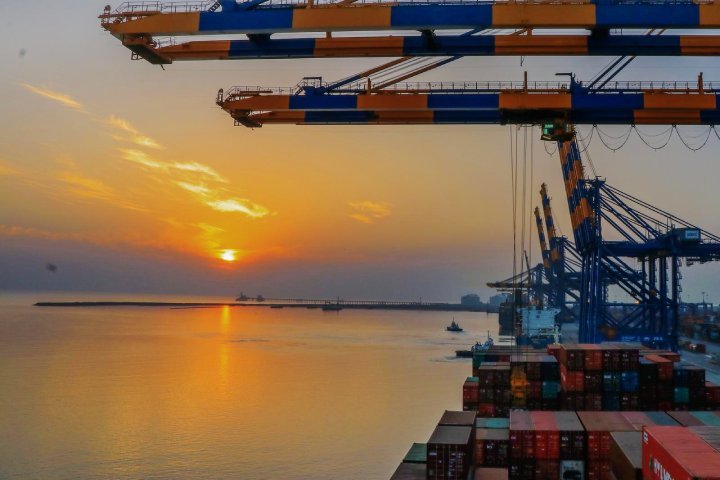
Although categorised as one of the minor ports in India, Mundra Port has capabilities and throughput that can surpass several major ports.
It is one of the largest commercial ports in India and has handled 180 MMT of traffic during 2023-24.
Owned by the Adani group, this Port has state-of-the-art infrastructure and has become one of the economic gateways that caters to the northern hinterland of India.
2. Sikka Port and Terminals, Gujarat
Sikka Port is primarily a bulk cargo handling port owned by Reliance Industries.
Located in Jamnagar, Gujarat, this port has facilities such as single-point mooring, Jetty berths for handling liquid cargo, an RO-RO jetty, and other berths for handling various cargoes.
The main cargo handled is petroleum, petrochemical products, and crude liquid cargo. The Bedi Sikka port had handled 127.98 million tonnes of cargo for the year 2021-22
3. Krishnapatnam Port, Andhra Pradesh
Krishnapatnam is an all-weather, deep-water, multipurpose port that was acquired by Adani Ports.
It is a significant bulk and container hub on India’s eastern coast, handling coal, iron ore, and agricultural commodities.
For the year 2023-24, this Port had handled 59 MMT of cargo. One remarkable aspect is that Krishnapatnam Port is the deepest port in India.
4. Dhamra Port, Odisha
Located near the mineral-rich region in the state of Odisha, Dhamra Port is an all-weather, deep-draft port that can accommodate super cape-sized vessels.
This Port has an 83 MMT capacity and handles Iron ore, coal, and limestone. This Port had handled 43 MMT of cargo in 2023-24.
5. Gangavaram Port, Andhra Pradesh
Located in Gangavaram, near the city of Visakhapatnam, this non-major port in India operates as a bulk cargo hub to manage Iron, Coal, raw materials for the steel and cement industries, and limestone.
A majority of ownership is with DVS Raju group (58.1%), followed by Adani Ports (31.5%) and the Government of Andhra Pradesh (10.4%)
This Port has advanced cargo evacuation and handling facilities. It has a 64 MMT capacity and has handled 37 MMT in 2023-24.
6. Magdalla Port, Gujarat
Located on the banks of the Tapi River in Gujarat, Magdalla Port is very near the industrially developed city of Surat.
This port handles a variety of cargoes, including fertilisers, Coal, Petroleum products, and general cargo. For the year 2021-22, Madgalla port handled 32.46 million tonnes of goods.
7. Dahej Port, Gujarat
Dahej Port is one of the natural deep sea ports in India, located in the Gulf of Khambhat in Gujarat, and has a capacity of 22.5MMT per annum.
Owned by the Petronet and Adani groups, Dahej Port is strategically located, providing access to Gujarat’s industrial and chemical hubs.
This Port has world-class facilities for handling liquefied natural gas. Additionally, it also handles other cargo, such as coal, fertilisers, and agricultural goods.
Other Important Non-Major Ports are:
- Jaigarh port, Maharashtra
- Dharamtar Port, Maharashtra
- Hazira Port, Gujarat
- Kakinada Port, Andhra Pradesh
- Pipavav Port, Gujarat
- Karaikal Port, Puducherry
- Kattupalli Port, Tamil Nadu
- Gopalpur Port, Odisha
- Dighi Port, Maharashtra
- Tuna Port, Gujarat
- Port Blair Port, Andaman and Nicobar Islands.
